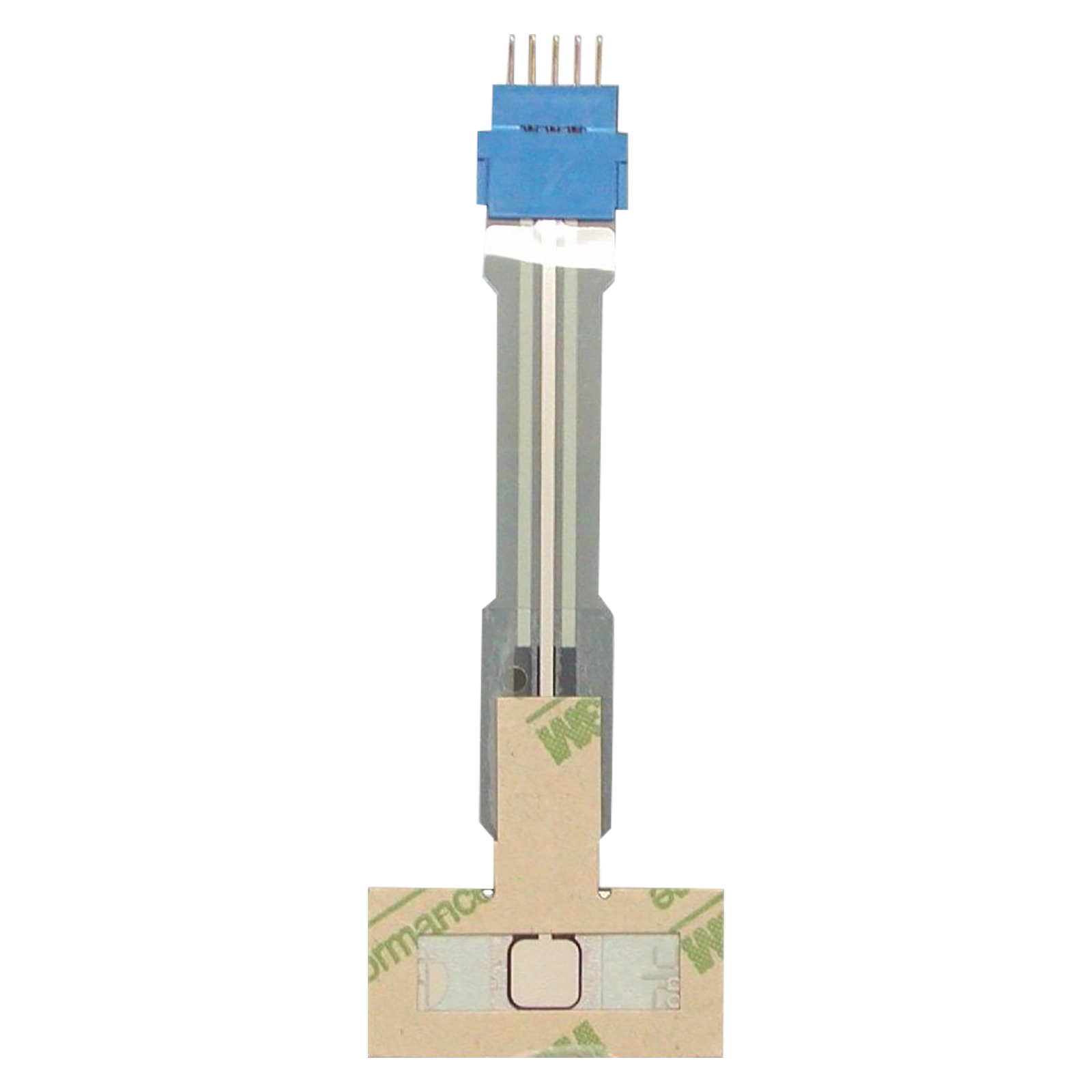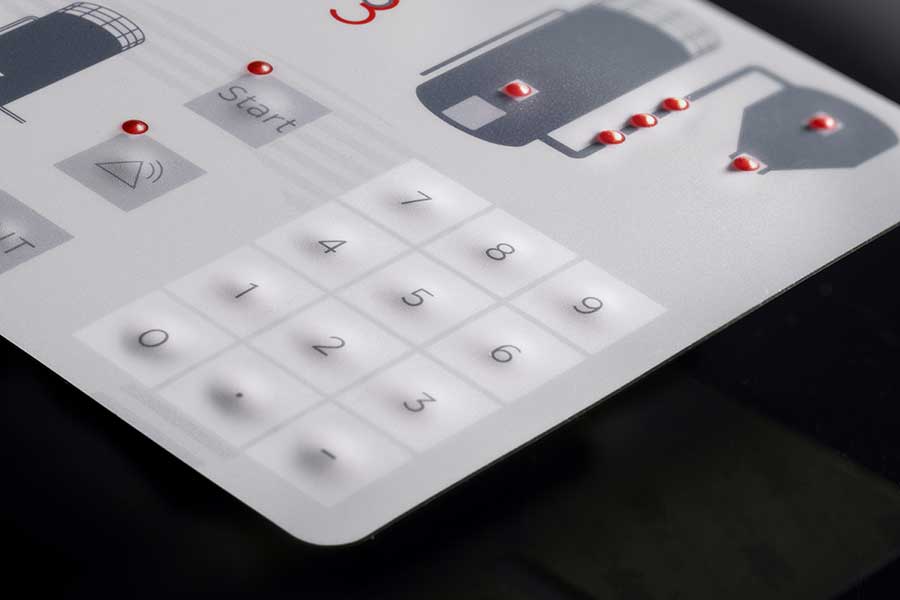Why Membrane Switches Are Critical for Efficient Control in Medical Equipment
Why Membrane Switches Are Critical for Efficient Control in Medical Equipment
Blog Article
Membrane Switch Over Innovation: The Secret to Trustworthy and Economical Interfaces
Membrane button technology has arised as a crucial part in the layout of customer interfaces, supplying both dependability and cost-effectiveness across a varied variety of applications. As we check out the diverse advantages of membrane buttons, their possibility for development elevates concerns about future applications and evolving trends.
Understanding Membrane Layer Switch Technology
Membrane switch technology is a commonly used user interface solution in numerous digital tools, supplying a seamless mix of capability and design. This modern technology incorporates several layers of products, typically being composed of a visuals overlay, spacer layer, and a circuit layer. The visuals overlay displays the interface aspects, while the spacer layer separates the circuit layer from the overlay till a customer turns on a button.
When pressure is used to the overlay, the circuit layer completes the electrical circuit, sending out a signal to the tool. This system enables for numerous arrangements, consisting of tactile feedback and backlighting choices, enhancing individual interaction. Membrane layer buttons are typically manufactured making use of resilient products such as polyester or polycarbonate, making sure long life and resistance to environmental elements like dampness and dirt.
The versatility of membrane switches over enables their application in diverse industries, consisting of medical gadgets, customer electronic devices, and industrial controls. Their small layout permits for integration right into space-constrained environments, supplying an effective individual interface without compromising aesthetic charm. Recognizing the complexities of membrane button technology is important for suppliers and developers seeking to create reputable and efficient human-machine user interfaces.
Key Advantages of Membrane Layer Switches
While various user interface solutions exist, membrane changes deal distinctive benefits that make them a preferred selection in various applications. One of the key benefits is their longevity; membrane layer switches are designed to stand up to rough ecological problems, consisting of dampness, dust, and temperature level fluctuations, guaranteeing long-lasting performance. This strength significantly decreases the requirement for regular replacements, thereby reducing total maintenance costs.

Additionally, membrane buttons are lightweight and portable, making them ideal for applications where area is limited. Their inconspicuous design contributes to a streamlined appearance without compromising performance.
Cost-effectiveness is also a notable advantage, as the manufacturing process for membrane layer switches over often tends to be cheaper contrasted to typical mechanical buttons. This price, combined with their integrity and simplicity of installation, placements membrane changes as a useful remedy for a large range of sectors looking for efficient and effective individual interfaces.
Applications Across Various Industries
Exactly how do membrane switches adapt important site to the diverse requirements of different sectors? Membrane layer button innovation is increasingly recognized for its versatility, making it ideal for a vast array of applications across numerous markets. In the medical area, membrane layer buttons are utilized in analysis equipment and patient surveillance devices, where their durability and simplicity of cleansing are important for preserving health standards. The automotive industry employs these switches in dashboards and control panels, providing a streamlined aesthetic while making sure straightforward procedure.
In consumer electronic devices, membrane layer switches give a portable service for remote controls and news home appliances, enhancing individual experience with user-friendly style. Furthermore, the industrial market leverages membrane layer buttons for equipment control board, taking advantage of their resistance to harsh atmospheres, such as moisture and dirt.
Army and aerospace applications additionally make use of membrane buttons for their reliability and capacity to withstand extreme conditions, making certain functional efficiency in essential scenarios. The food and drink sector embraces these buttons for automated systems, where hygiene and convenience of operation are critical (membrane switch). Inevitably, membrane buttons are customized to fulfill the distinct needs of each market, confirming their essential role in modern-day technology user interfaces
Design and Modification Options

In the realm of membrane layer button modern technology, design and modification choices play a crucial function in boosting functionality and individual communication. These switches can be customized to meet particular functional demands and aesthetic preferences, making them functional elements in numerous applications.
Among the primary customization options is the design of the button itself, which can be created to accommodate special interface and ergonomic considerations. By readjusting the form, size, and arrangement of buttons, makers can produce user-friendly styles that help with simplicity of use. Additionally, the incorporation of various colors and graphic overlays permits branding and enhanced presence, guaranteeing that users can quickly determine features.
Moreover, membrane layer switches can be crafted with different responsive feedback mechanisms, such as increased buttons or audible clicks, to enhance the individual experience. Different products can likewise be chosen for longevity and ecological resistance, attending to elements such as wetness, temperature changes, and chemical exposure.
Eventually, the substantial layout and modification alternatives readily available in membrane layer button modern technology equip businesses to create customized remedies that not just fulfill practical needs yet additionally straighten with their branding and operational demands.

Future Trends in Membrane Switches
As membrane layer button innovation proceeds to develop, future patterns are progressively focused on boosting find individual experience and incorporating advanced functionalities. One substantial trend is the combination of touch-sensitive and capacitive innovations into conventional membrane layer switches. This development permits more user-friendly interface, offering tactile feedback while preserving a sleek design.
Another emerging trend is the use of eco-friendly materials, driven by the growing need for lasting manufacturing techniques. Makers are looking for to reduce their carbon footprint by using recyclable substrates and low-impact inks, straightening with worldwide sustainability goals.
Moreover, the surge of the Internet of Points (IoT) is motivating the unification of clever functions into membrane layer buttons. Improved connection options will certainly make it possible for tools to interact with each various other, enabling smooth combination right into broader systems.
Furthermore, advancements in printing technologies, such as electronic printing, are permitting greater style versatility and customization. This enables suppliers to generate intricate layouts and lively shades cost-effectively.

Final Thought
To conclude, membrane layer button technology stands for an essential advancement in interface design, providing considerable advantages in toughness, modification, and cost-effectiveness. Its extensive applicability across diverse markets underscores its significance in modern-day technology. As innovations continue to emerge, particularly in touch-sensitive interfaces and sustainable materials, the capacity for membrane layer switches over to improve individual experience and capability remains promising. Continued exploration of this modern technology will likely yield further renovations and expand its range in future applications.
Report this page